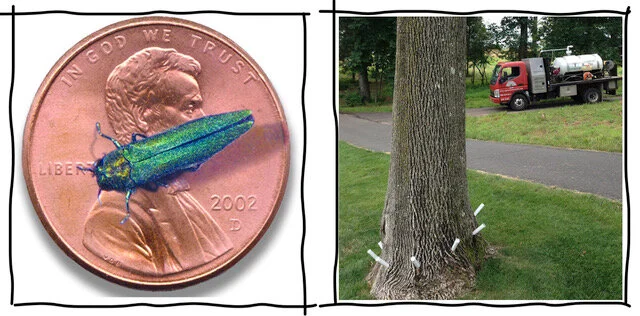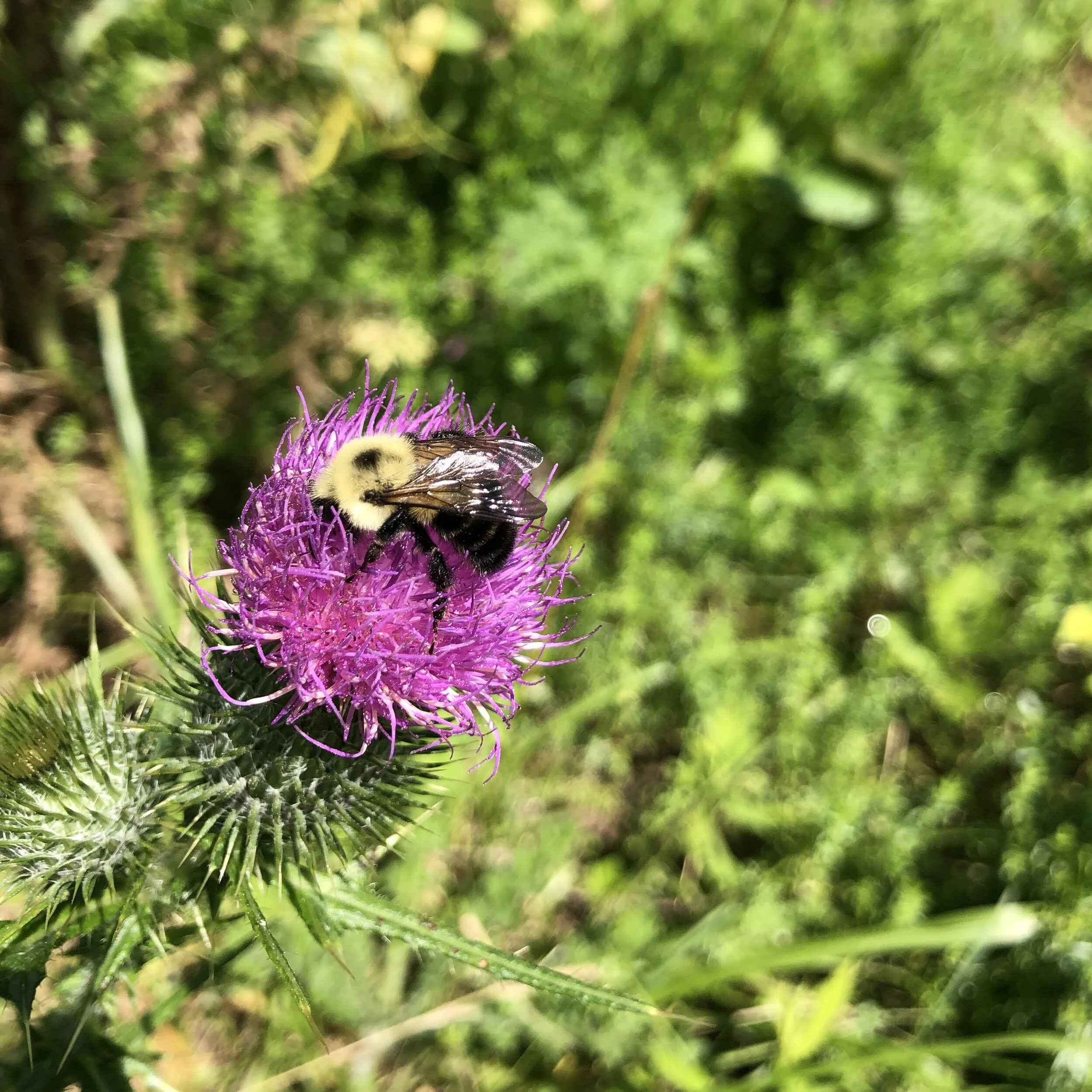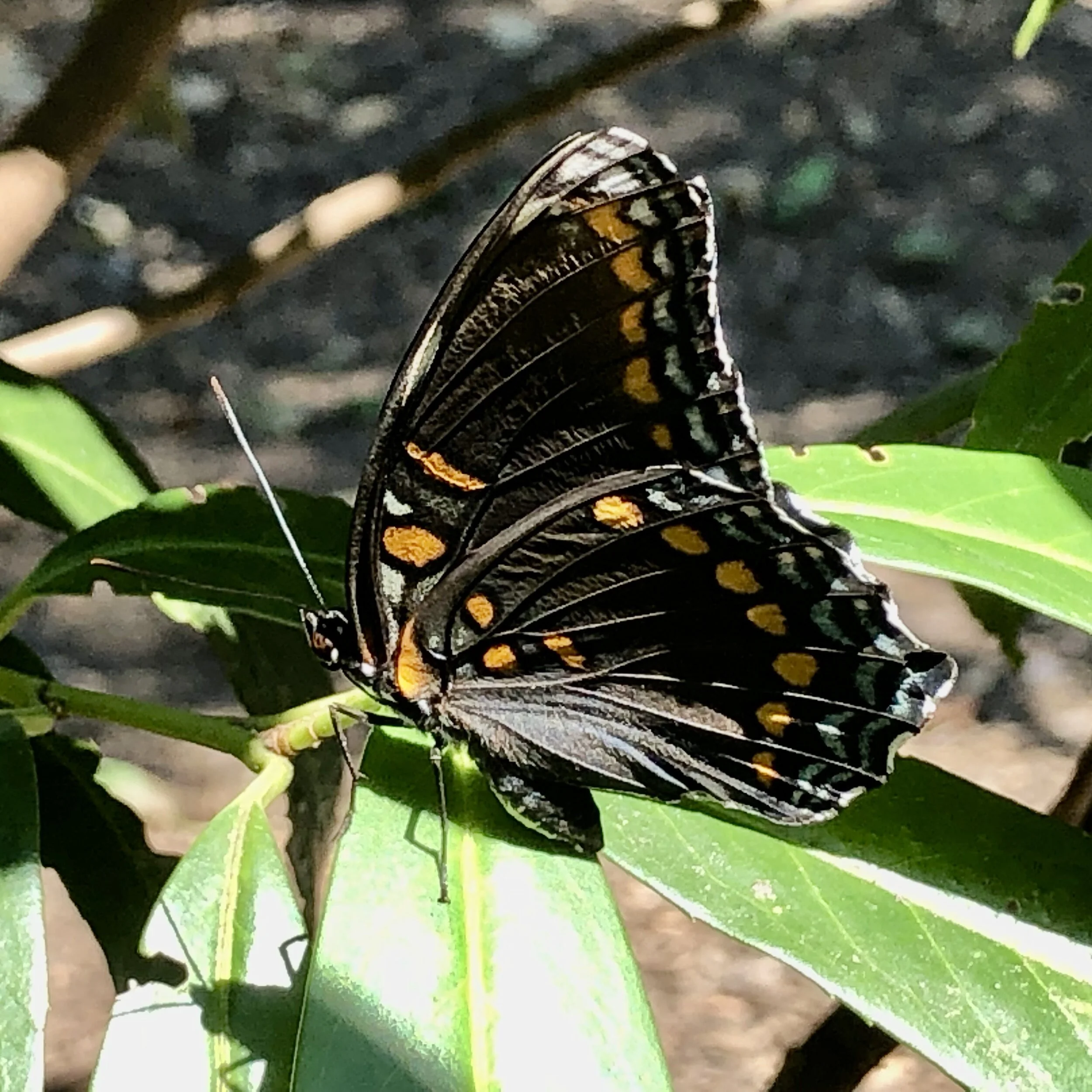History of Parasitic and Fungal Disease
In 1904, chestnut blight was accidentally introduced to the United States when a parasite came in from Japan with some ornamental plants. It was first detected at the Bronx Zoo. Devastatingly, by 1940, most American chestnut trees had been wiped out. Estimates put the loss at four billion trees. The chestnut was a great source of food for people and many animal species, and their populations were affected too. On the East Coast, it is estimated that one in four trees was an American chestnut. Most of us alive today never got to see these noble old trees.
Less than a generation later, in 1928, Dutch elm disease came along. It was caused by a fungi spread by elm bark beetles which arrived in the U.S. from Asia with a shipment of logs to be used as veneer for furniture. Quarantine kept it in the New York City area for thirteen years, but it eventually spread and, by 1989, we had lost 75% of these majestic trees. Imagine street lined with trees whose arching branches touched in the middle and shaded your parked car. Now imagine them suddenly gone. It was devastating. Elms we plant today are hybrids, a cross of European varieties with the remaining, most disease-resistant American specimens.
Should You Cut Down Your Ash Trees? A Possible Solution - Organic Injection Treatment
Emerald Ash Borers
Driving through the Catskills six years ago, I was saddened to see what seemed like 50 acres of trees being cut down between Rt. 28 and the Ashokan Reservoir. A sign said that trees were being removed to combat emerald ash borers. The emerald ash borer, or EAB, was first discovered in the U.S. in 2002, but it was 2014 before it got to New Jersey. It probably came from Asia on wood pallets used in shipping. This beautiful but deadly beetle will lay eggs on the ash tree’s bark. Hatched larvae then bore into the tree and feed on the tissue beneath the bark. This tissue, called xylem, is like our arteries. It moves water up and down from roots to the ends of the highest leaves. Once the xylem is destroyed, the tree is doomed.
I took comfort in the thought that New York was taking action, creating a firewall to stop the invasive beetle’s march into New Jersey. That was part of the story, but there was more. I later learned that New York had removed 4,000 trees on 200 acres, and those trees were not yet infested. New York City owns the reservoir, and had made a calculation: Cut down the trees before they become infested and ‘preserve their value’, i.e., sell the wood and make money; or wait until they inevitably become infested and get nothing. Ash wood is valuable for making baseball bats, tool handles, furniture, and flooring, but once infested with the ash borer, it is worthless and costly to remove.
The ash borer spreads by flying from tree to tree, but it’s even more likely that humans accidentally help it spread when we transport ash as firewood or lumber. In New Jersey, ash wood is now under quarantine. To slow the spread, you are not permitted move ash wood between states.
Should You Cut Down Your Ash Trees?
If you have an old, glorious ash tree in your yard, what should you do? With the emerald ash borer on the move, doing nothing is not an option. You need to either remove it or treat it.
If the tree would not cause damage if it fell, try to treat it. It will cost you about $300 every two years. But treatment over a long period is not sustainable. If you are not willing or able to make that commitment, I suggest removing the tree now. As painful as it might seem, removal is the best way to slow EAB spread. Once infected, the ash tree will die within 2-4 years. Especially if your tree is in an inhabited area, it’s important to take it down before it becomes dangerous, not only to any neighbors nearby, but also to the tree experts who have to climb into up to remove it.
If you do decide to treat your ash, consider your options carefully. Foliar spray— spraying the entire tree—is generally a bad idea. Imagine an insecticide (a poison) sprayed into the tops of a huge tree and how much of that spray ends up in the wrong places. Another option is a trunk spray which can last up to a year, but will kill all insects, not just the problematic emerald ash borer. A third choice is a soil drench, but results can be inconsistent and it will also kill beneficial insects in the soil.
The best treatment is an injection of insecticides directly to the xylem, which works much like chemo-therapy in attacking the affected tissue. A few synthetic compounds are very effective for injection. Since ash trees are not insect-pollinated, there is less danger to insects or bees. But it will kill any caterpillars living in the tree. And treatment can be toxic to birds and aquatic life, so keep it away from lakes and rivers.
An organic injection treatment is the best option. TreeAzin, similar to neem oil, interrupts larval growth and egg viability in adult EABs so that populations decline. It is injected directly into the tree, so it has much less impact on the environment. Organic Plant Care Tree Experts in Frenchtown (908-386-4346) provides injection treatments. Costs are a few hundred dollars per tree, every two years. Check out their website here for more information.
So should you cut down your ash trees or treat them? It’s up to you. For now, the scientists fear that the ash tree will suffer the same fate as the chestnuts and elms. There is little hope that we can stop the emerald ash borer and save the trees. But through awareness of the accidental harm humans cause and by taking fast, effective action, we can make the difference. Instead of becoming part of the problem, we need to start being more aware of how we treat the natural world.
What’s next? The spotted lantern fly.
Learn more about me Carolle Huber my sustainable landscape blog and the inspiring sustainable landscapes that I design here.
Carolle



















